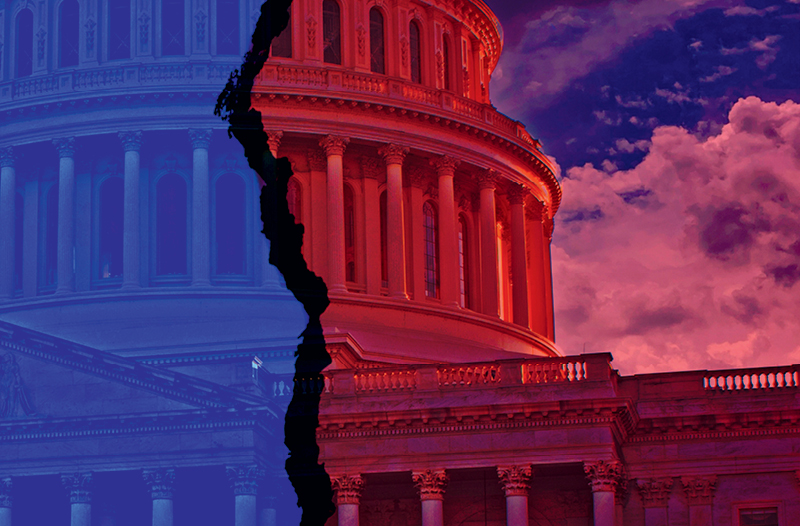
Legislating Wildfire Risk Reduction

As wildfire seasons have intensified across the United States, Congress has leaned into a legislative solution to transform federal forest management.
Lawmakers in both chambers are leading the way with the Fix Our Forests Act (FOFA). Initially introduced in the 118th Congress, it passed the House with bipartisan support but ran out of time on the Senate calendar without receiving a vote in the upper chamber. This Congress, FOFA (HR 471) has already been introduced and quickly passed the House on Jan. 23 in a 279-141 vote. Once again it is championed by House Natural Resources Committee Chairman Bruce Westerman (R-Ark.) and Rep. Scott Peters (D-Calif.).
Many of its measures originated with recommendations issued in September 2023 after two years of work by the interagency (Agriculture, Interior, and Homeland Security) Wildland Fire Mitigation and Management Commission. These include creation of a community wildfire risk reduction program that supports interagency coordination to lower wildfire risk and develop new technologies for wildfire mitigation.
FOFA aims to expedite and scale active forest restoration, including thinning and prescribed burns to reduce wildfire risk on federal and tribal lands. While it does not specify the targeted coverage area, the federal Bureau of Land Management and U.S. Forest Service together manage roughly 438 million acres of land, while the federal government in total holds over 56 million acres in trust for American Indian tribes.
The legislation would create for the first time Fireshed Management Areas determined by the Agriculture and Interior secretaries. These areas would consist of the top 20% of federal land that is at risk of wildfire.
It also calls for an interagency Fireshed Center that would assess and predict fire risks and maintain a registry on a publicly accessible website that provides data on individual firesheds. The 15 agencies represented in the Center (ranging from the National Park Service to Department of Defense) would work in tandem with state, local, and tribal representatives to better understand, prepare for, and respond to wildfires.
The bill defines firesheds as large, interconnected geographical areas that face wildfire threats and where intervention could shape the outcome of the wildfire.
The legislation would authorize the Agriculture and Interior secretaries to carry out fireshed management projects so long as they do not violate the National Environmental Policy Act (NEPA)—the 1969 law that requires federal agencies to assess the environmental effects of their proposed actions before making decisions. Additionally, it provides procedures for judicial review of agency decisions that may get caught up under NEPA review and puts a 180-day limit on how long these decisions can be reviewed.
Insurance trade associations and other stakeholders, including the Bipartisan Policy Center and American Wildlife Conservation Partners, consider FOFA to be comprehensive in improving how the federal government considers and responds to wildfires on its land. It provides federal agencies and tribal governments with the tools needed to holistically care for federal and tribal forests and respond to any emergencies that may decimate them.
The Senate version of FOFA is also a bipartisan effort, led by Sens. John Curtis (R-Utah), John Hickenlooper (D-Colo.), Tim Sheehy (R-Mont.), and Alex Padilla (D-Calif.). Introduced in April, S 1462 is largely similar to the House bill, although it does have some differences, including the creation of a Wildlife Intelligence Center, a joint office between the Departments of Agriculture and Interior. This Center would operate like the National Weather Service and help both agencies, along with other public and private entities, to better predict, prepare for, and respond to wildfires. The Senate Agriculture, Nutrition, and Forestry Committee held a legislative hearing on the bill on May 6.
Due to the bipartisan nature and bicameral support for the Fix Our Forests Act—along with the Trump administration’s multiple executive orders regarding wildfires, federal lands, and forestation—there is hope that this legislation might actually be on its way to becoming law.




